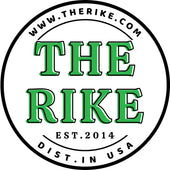Harnessing Nature: A Beginner's Guide to Herbal Medicine and Healing Plants
In recent years, there has been a surge in interest in natural remedies and herbal medicine. As more people seek alternatives to conventional medicine, the wisdom of using plants for healing has resurfaced as an essential practice. This beginner’s guide will provide an overview of herbal medicine, introduce you to key healing plants, and offer practical advice for incorporating them into your life.
1. Understanding Herbal Medicine
Herbal medicine, also known as phytotherapy or botanical medicine, involves the use of plants or plant extracts for therapeutic purposes. It is based on the idea that natural substances can support healing processes and improve health quality. Understanding the theory and application of herbal medicine requires an exploration of its history, principles, and benefits.
1.1 History of Herbal Medicine
The use of plants for medicinal purposes dates back thousands of years. Ancient civilizations, such as the Egyptians, Chinese, and Greeks, documented the use of herbs in their medical practices. For example:
- Ancient Egypt: The Ebers Papyrus, written around 1550 BC, contains over 700 remedies using various herbs.
- Traditional Chinese Medicine (TCM): TCM incorporates herbal formulas that have been developed over centuries, emphasizing balance and harmony in health.
- Greek Medicine: Physicians like Hippocrates and Galen utilized herbs, contributing significantly to early medicinal practices.
1.2 Principles of Herbal Medicine
The principles of herbal medicine include:
- Holistic Approach: Herbalists consider the individual's physical, emotional, and spiritual well-being.
- Synergistic Effects: The combination of various plants can enhance therapeutic effects compared to isolated compounds.
- Preventative Care: Emphasizing wellness and preventing illness rather than just treating symptoms.
2. Benefits of Herbal Medicine
Herbal medicine offers numerous benefits, making it a popular choice for many. Key advantages include:
- Natural Healing: Herbs are natural substances, often free from synthetic chemicals.
- Personalized Treatments: Herbalists can tailor remedies to individual needs and health conditions.
- Fewer Side Effects: Many herbs have fewer and less severe side effects compared to pharmaceuticals.
- Cost-Effective: Growing your own herbs can be economical, and herbal remedies are often more affordable than prescription medications.
3. Getting Started with Herbal Medicine
As a beginner, here are some practical steps to start your journey into herbal medicine:
3.1 Educate Yourself
Begin by reading books, taking online courses, and following reputable herbalists. Some recommended readings include:
- "The Complete Herbal Handbook for Farm and Stable" by Juliette de Bairacli Levy
- "Herbal Medicine: Biomolecular and Clinical Aspects" by Holly Johnson
- "The Herbal Medicine-Maker's Handbook" by James Green
3.2 Gather Supplies
Invest in some essential supplies for making herbal remedies, including:
- Herbs (dried or fresh)
- Essential oils
- Bulk containers like jars and bottles
- Tools for preparing your herbs (grinders, scales, etc.)
3.3 Build a Herbal Garden
Consider growing your own herbs if you have space. Some easy-to-grow herbs include:
- Basil
- Mint
- Rosemary
- Thyme
- Chamomile
4. Key Healing Plants and Their Uses
Below are some popular herbs and their commonly known benefits:
4.1 Chamomile (Matricaria chamomilla)
Chamomile is well-known for its calming effects. Often used as a tea, it can help reduce anxiety, aid sleep, and promote digestion.
4.2 Echinacea (Echinacea purpurea)
Echinacea is best known for its immune-boosting properties, often used to prevent or shorten colds and flu symptoms.
4.3 Ginger (Zingiber officinale)
Ginger is widely used to alleviate nausea, boost the immune system, and aid in digestion.
4.4 Turmeric (Curcuma longa)
Turmeric contains curcumin, which has potent anti-inflammatory properties. It is often used in supplements and teas to support joint health.
4.5 Peppermint (Mentha piperita)
Peppermint is useful for digestive discomfort and headaches. Its essential oil can also be applied topically for a cooling effect.
5. Herbal Preparations
Herbal medicine involves various preparation methods, including:
5.1 Infusions
Infusions involve steeping herbs in hot water, similar to making tea. Use this method for delicate leaves and flowers.
5.2 Decoctions
For tougher plant parts like roots and bark, decoctions are used. These involve simmering herbs in water for an extended period.
5.3 Tinctures
Tinctures are concentrated liquid extracts made by soaking herbs in alcohol or vinegar. They can be taken in small doses.
5.4 Salves and Ointments
These topical applications are made by combining infused oils with beeswax or shea butter and can be used for skin ailments.
6. Safety and Considerations
While herbal medicine is generally safe, it's essential to exercise caution:
- Consult a healthcare professional before starting any new herbal regimen, especially if you are pregnant, nursing, or taking medications.
- Start with small doses and monitor for any adverse reactions.
- Educate yourself about potential interactions with other herbs and medications.
7. Community and Resources
Joining a community or group can enhance your learning experience. Look for local herbalist meetups, workshops, or online forums. Some useful resources include:
- American Herbalists Guild
- Herbal Medicine Facebook Groups
- Local herbalism conferences and events
Conclusion
Herbal medicine is a time-honored practice that allows individuals to connect with nature and tap into its healing potential. As you explore herbalism, remember to approach it with curiosity and respect. Whether you're looking to treat specific ailments or simply enhance your overall well-being, the world of healing plants offers a wealth of knowledge and resources that can enrich your life.





Leave a comment